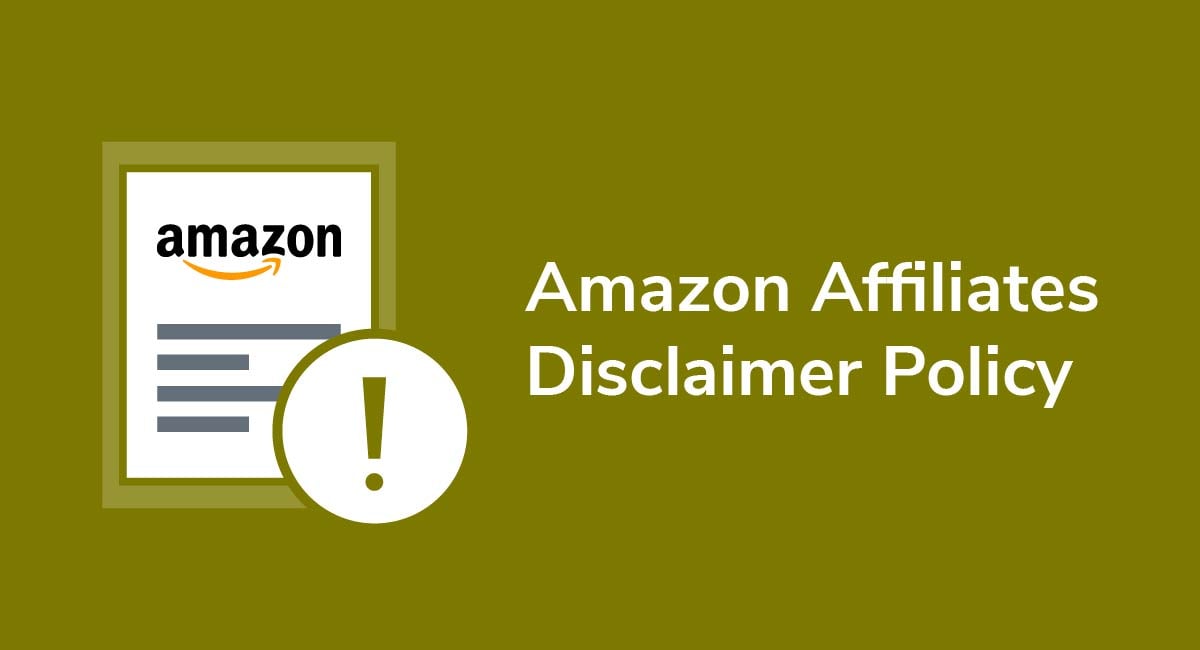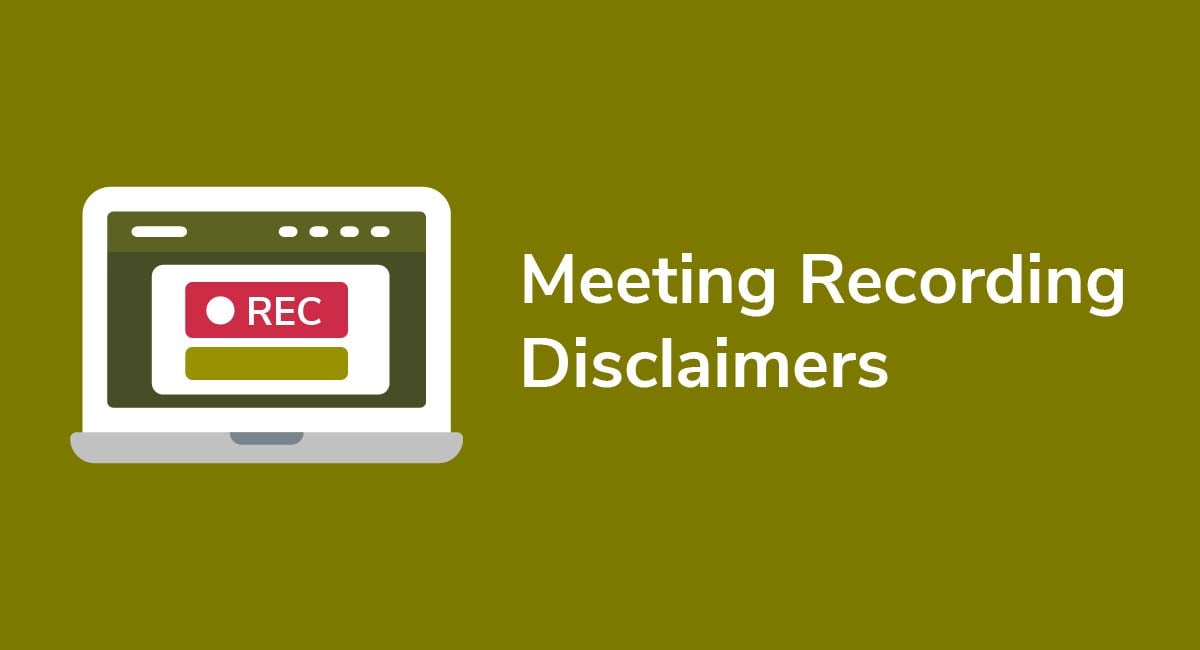What is a Copyright Disclaimer?

A copyright disclaimer is a notice that discloses who created or owns a particular piece of content, when it was created, and that it's copyrighted.
In addition to asserting the owner or creator's legal rights, copyright disclaimers can act as deterrents against unauthorized use or theft by spelling out how the material can and cannot be used and whether authorization or licensing is required.
In this post, we'll cover copyright disclaimers from every angle to help you determine if you need one, how to create one if you do, and where to place it for maximum visibility.
Get compliant today with PrivacyPolicies.com
Select one of our generators to create the required legal agreements for your business:
- Our Privacy Policy Generator can help you generate a customized Privacy Policy in around three minutes, for free.
- Our Terms & Conditions Generator can help you generate a customized Terms & Conditions agreement in around three minutes, for free.
- Our EULA Generator can create a customized End-User License Agreement for your mobile or desktop app.
- Our Cookies Policy Generator can create a customized Cookies Policy to help your compliance with ePrivacy Directive and GDPR.
- Our Disclaimer Generator can create a disclaimer or disclosure for your website.
- Our Return & Refund Policy Generator can help your ecommerce store by creating a returns or refunds policy.
Integrate a free Cookies Notice and Cookie Consent banner to comply with the EU ePrivacy Directive and the new GDPR law regarding cookies.
- 1. Why Copyright Disclaimers Are So Important
- 2. Who Should Use a Copyright Disclaimer?
- 3. What to Include in Your Copyright Disclaimer
- 3.1. Part 1 - The Copyright Symbol or Word
- 3.2. Part 2 - Year of Creation or Publication
- 3.3. Part 3 - Name of the Creator or Owner
- 3.4. Part 4 - Statement or Reservation of Rights
- 4. Fair Use and Licensing Information
- 5. Where Should Your Copyright Disclaimer be Displayed?
- 6. Conclusion and Summary
Why Copyright Disclaimers Are So Important
Since it's relatively easy for unscrupulous users to claim non-copyrighted material as their own, copyright disclaimers are vital tools that can:
- Prove that the work is yours
- Ensure that you get credit for it
- Protect against legal disputes down the road
Who Should Use a Copyright Disclaimer?

Any person or business that creates, owns, or publishes original material should consider having a copyright disclaimer to protect against theft, unauthorized use, and legal action.
Copyright disclaimers are most commonly associated with websites and other online media, but they're just as crucial for physical content like books, photographs, and original works of art.
Before moving on to the next section, it's worth noting that copyright disclaimers should only be used for original work, not for licensed products or those created or owned by another person or business.
What to Include in Your Copyright Disclaimer

Though they vary by industry and business type, most copyright disclaimers include the following components:
- The Copyright symbol (©) or the word "copyright"
- The year the content was created, published, or updated
- The name of the creator or owner
- A statement detailing the creator's rights to the content (Reservation of Rights)
- Fair Use and licensing Information
Longer and more in-depth copyright disclaimers may be accessed by a link that leads users to a separate page with more detailed information.
Part 1 - The Copyright Symbol or Word

Though they're generally small and often get overlooked, Copyright symbols ((c)) are important components of copyright disclaimers. However, some businesses skip the symbol and just use the word "copyright."
Copyright symbols are almost always found at the beginning of a copyright disclaimer, like in the following example from Mack Trucks:

Detroit Diesel's copyright disclaimer includes the word "Copyright" as well as the symbol itself:

Copyright symbols act as visual notices that a piece of work is copyrighted, and they're generally recognizable and understood regardless of the location and nationality of those viewing them.
Part 2 - Year of Creation or Publication

Copyright disclaimers generally include the publication date for physical media like books and magazines.
However, online content is not so simple because websites are often updated frequently.
Barnes and Noble's copyright disclaimer gives a range of years to reflect when the website was created (1997) and when it was last updated (2022):
![]()
By contrast, Cheetos' online copyright disclaimer only includes the current year or date of the last update:

This format will vary depending on the nature of your content. At a minimum, websites will include one date with the current year in order to reflect that all current content is copyright protected.
Part 3 - Name of the Creator or Owner

Another critical element of a copyright disclaimer is the name of the person or entity that owns or created the content.
Some copyright disclaimers also include the name of the person who created the content, even if it is owned by or being lawfully used by another person, business, or organization.
If the owner or creator is a business, the company's full legal name should be included.
Some copyright disclaimers also include the following:
- Commonly used trade names
- The name of the parent company
- A reference to affiliates (as in the image from Amazon's copyright disclaimer below)
![]()
This part will come immediately after the date in the copyright disclaimer.
Part 4 - Statement or Reservation of Rights

"All rights reserved" statements assert that you, the creator, or the owner claim ownership of a piece of copyrighted work.
Using the copyright symbol (or word) is generally sufficient to claim ownership rights. Reservation of Rights statements are no longer required, but many copyright disclaimers still include them to be on the safe side. If so, they'll often include the phrase "All rights reserved," like in the ORIENT Watches (owned by Seiko Epson) example below:

Including "All rights reserved" is beneficial because it's a common term that can act as a warning to would-be thieves and other unauthorized users that you are claiming maximum copyright protection for all of your material.
In copyright disclaimers that include reservations of rights, the last two sections are generally separated by and end with periods.
It's also worth noting that only partial rights may be reserved for certain material, and in some instances, creators and owners may choose to make their content open source by expressly waiving all rights.
This is often the case when the primary goal is to get material in as many hands as possible as efficiently as possible, as opposed to generating revenue and protecting intellectual property.
Fair Use and Licensing Information

While not technically a part of a standard copyright disclaimer, many websites include clauses that address copyright and fair use within a Terms and Conditions agreement, or its own separate web page. This clause often includes a section that defines fair use to let potential users know what the term does and does not mean.
Fair use allows limited use of copyrighted material without permission for purposes such as teaching, research, and criticism. Anyone interested in using your original work or content must take the following four considerations into account:
- The nature of the copyrighted work. Fact-based works are generally more open to fair use than fictional ones.
- The purpose for which the material is being used - For educational or commercial purposes.
- The size of the work in relation to the whole. Small snippets are generally more acceptable for fair use than large sections.
- The effect on the value and marketability of the work. Fair Use may not apply if it will hinder or prevent you as the creator or owner from deriving revenue from your work or property.
Listing these criteria in a copyright or fair use clause within your Terms and Conditions agreement, or as its own web page, may help inform or remind users that fair use doesn't give them the ability to use your work in any way they see fit.
The University of Phoenix has a clause within its Terms & Conditions agreement that states all content and materials are copyrighted by the company unless otherwise noted:

All Creatures includes this notice in its website footer, underneath its copyright disclaimer:

This same type of language can be used for your fair use disclaimer regardless of whether you place it in your Terms agreement, on its own web page, or elsewhere on your site.
Where Should Your Copyright Disclaimer be Displayed?

Copyright disclaimers are typically found at the bottom of websites, in the website footer.
Raid (an S.C. Johnson & Son brand) places its copyright disclaimer centered at the bottom of its homepage:

The Maryland Motor Vehicle Administration (MVA) includes a link to its Copyright Statement in its website footer:

After clicking on the Copyright Statement link, users are redirected to the following page where the copyright disclaimer is displayed:

Conclusion and Summary
Copyright disclaimers are vital components on all media and platforms that sell, display, aggregate, and distribute original work created or owned by a person or business entity.
Having a copyright disclaimer in a conspicuous location can act as a deterrent against theft and unauthorized use, prevent anyone from claiming that they couldn't find it, and aid creators and owners in disputes.
These disclaimers can be simple one-line affairs or multi-page documents accessible by link only.
Though they vary by industry, business type, and content, many copyright disclaimers include the following components:
- The Copyright symbol (©), the word Copyright, or both
- The year the content was created, published, or updated, or the date range of protected content
- The name of the content's creator, owner, or both
- A statement detailing the creator's rights to the content (Reservation of Rights)
It's wise to place your copyright disclaimer at the bottom of your website (like most companies do) to ensure that it's easy to find. You can also add information about copyright in your Terms and Conditions agreement, or on its own web page addressing the topic.


